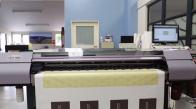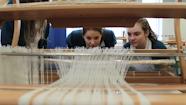Useful resources to explore sustainability in the fashion industry
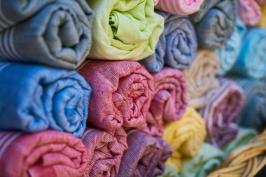
Technological outcomes are designed to enhance the capabilities of people and expand human possibilities. They also affect our natural and social worlds.
In the technology learning area students are encouraged to consider both the positive and negative impacts that technology has made on natural and social environments.
Clothing and associated textiles have had major impacts on both the natural and social worlds. The environmental impact of fashion extends to agriculture, petroleum, forestry, mining, construction, shipping, and manufacturing.
Students could explore aspects of sustainability in the fashion industry, including:
- the popularity of polyester, a petroleum product
- pesticide use in cotton crops
- the quantities of water required to process cotton
- chemicals and dyes discharged into waterways
- sweatshop working conditions in clothing factories
- the environmental effects of shipping products around the world
- the disposal of vast quantities of discarded clothing.
Sustainability in the nature of technology strand and in NCEA standards
Nature of technology
In the characteristics of technology component, the indicators of progression include students describing the relationship between technology and made, natural, and social environments.
Fitness for purpose in its broadest sense is a concept introduced at level 8.
Fitness for purpose in its broadest sense relates to the outcome itself, as well as to the practices used to develop the outcome. In their projects students consider the sustainability of the resources used, their life cycle, and their ultimate disposal when they address fitness for purpose in its broadest sense.
NCEA achievement standards
At level 2 NCEA one of the achievement standards available for assessment is AS91363 Demonstrate understanding of sustainability in design.
Fitness for purpose in its broadest sense is included in several of the level 3 NCEA generic achievement standards, for example: AS91616 Demonstrate understanding of how the fitness for purpose of technological outcomes may be broadly interpreted.
Fibre production useful resources
These resources investigate issues of sustainability in the clothing industry. They explain existing negative environmental and social effects and explore solutions and positive initiatives for change.
Fibre production
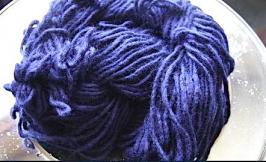
The way that fibre is grown, processed into yarn, and then manufactured into fabric has major impacts on the environment. Large amounts of chemical pesticides are used on cotton crops and large amounts of water are required to process it into a yarn.
These articles give a broad introduction to the environmental impacts of fibre production:
- We Have No Idea How Bad Fashion Actually Is for the Environment
- Impact of Textiles and Clothing Industry on Environment: Approach Towards Eco-friendly Textiles
The Global Organic Textile Standard (GOTS)
GOTS is the worldwide leading textile processing standard for organic fibres. It includes ecological and social criteria and is backed up by independent certification of the entire textile supply chain.
Massey University textiles programme: Developing eco-friendly fabrics
Dr Sandy Heffernan at Massey University, Wellington has had students in the textiles programme work on developing eco-friendly fabrics.
Read about it in the case study: Developing eco-friendly fabrics.
New Zealand fur industry
In New Zealand the fur industry makes a contribution to managing possums and rabbits that are pests in our environment.
- Basically Bush supply pelts within New Zealand and internationally.
- Woolyarns make yarns that are a blend of wool and possum fur.
- From pest to eco-fashion: Dunedin designer Jane Avery makes clothing out of wild rabbit fur.
Technology in the news
These Technology Online news items introduce technological developments that may help to promote sustainability in textile manufacturing.
Dyeing useful resources
Dyeing
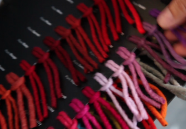
Clothing to dye for: the textile sector must confront water risks
Textile dyes can be carcinogenic and the waste from dyeing is often a major pollution problem for waterways in surrounding areas. This issue and possible solutions are discussed in this article in The Guardian.
Can it be an organic fabric if it uses synthetic dyestuffs?
This blog provides further information on the impact of dyes on the environment and the potential of natural dyes.
Natural dyeing techniques
A year 9 class uses natural dyes to create fabric for the sets of their school production.
Riverblue
Riverblue is an award-winning documentary narrated by water-supporter Jason Priestley. It follows internationally celebrated river conservationist, Mark Angelo, on a journey that uncovers the dark side of the fashion industry.
Zero waste useful resources
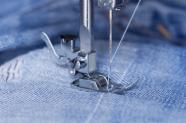
Zero waste
On average, 15% of fabric is wasted during the cutting and assembly stages of garment manufacture. Zero waste design is a movement to eliminate fabric waste by designing pattern pieces that generate no waste.
Image courtesy of foto76 at FreeDigitalPhotos.net
Design efficiency – zero-waste patterns
Techniques in pattern design to optimise fabric usage and reduce waste are discussed.
The Amazing Story of FabMo: How Two Dedicated People Can Make a Big Difference
This article celebrates the success of a non-profit organisation that recycles fabric samples.
How to start a sustainable fashion business
Article from the University of the Arts London with links to more information about starting a sustainable fashion business.
The rise of mending: How patches became hip again
Small New Zealand businesses mend and alter clothes.
Working conditions in the clothing industry useful resources
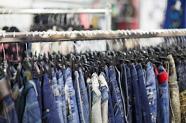 Working conditions in the clothing industry
Working conditions in the clothing industry

Various campaigns have been organised to raise consumer awareness of the plight of workers in the clothing industry.
Image courtesy of adamr at FreeDigitalPhotos.net
The 2 Euro T-Shirt – A Social Experiment
This video clip exposed consumers to the reality of life in a clothing factory.
The Myth of the Ethical Shopper
This article in the Huffington Post recommends that trade agreements include policies that insist producers must provide fair and ethical employment conditions.
The True Cost
The links between consumer pressure for low-cost high fashion and the meager existences of the sweatshop workers who produce those goods are explored in this documentary.
China Blue
This documentary follows the life of Jasmine Li, a seventeen-year-old worker from Sichuan province, in a jeans factory. It outlines the growth of China’s exports and exposes the sweatshop conditions in many factories.
Planet Money makes a t-shirt
A series that follows the making of a t-shirt from the cotton fields to the finished product.
Audit systems for ethical fashion
Audit systems for ethical fashion
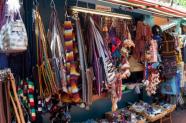
Ethical Fashion Report
Baptist World Aid generates this report each year for Australia and New Zealand fashion labels. It grades 106 companies on the strength of their systems to mitigate against the risks of forced labour, child labour, and exploitation in their supply chains. One New Zealand company that received an A rating was Kowtow.
Image courtesy of Phil_Bird at FreeDigitalPhotos.net
Clothes with a conscience
Radio New Zealand interviews Wellington-based Kowtow fashion design founder, Gosia Piatek.
Liminal
Liminal is a New Zealand company that also achieved a top rating in the Ethical Fashion Report. It makes apparel and bags under fair trade working conditions, using only sustainable or organic materials. Profit is reinvested into the communities in Kolkata in West Bengal that produce their products.
Paying the price for fast fashion: How to become an ethical shopper
New Zealand journalist, Nick Bezzant, discusses the fast fashion movement and how to become an ethical shopper.

Related videos
Outsourcing digital fabric printing (04:04)
A year 13 class connects with a fabric printing company to outsource their printing.
Koha and collaboration in textiles (04:23)
Massey University students worked with high school students in a client-designer relationship.
Evidencing student learning in technology (02:00)
Judy Delbridge broadens thinking around data collection, allowing her students to produce creative results.

